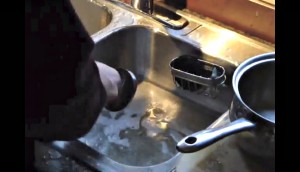Fire Ant Control and Container Gardens
/Fire ant!
This is a question submitted to us from one of our readers. Submit yours at
I'm looking for ideas for a container garden. We have a ton of fire ants all over the place and I don't want them in my garden. I was told you might have some ideas. Thank you!
—Beatrice Okker, Inglis, Fla.
Beatrice,
We have two answers for you. First, we'll address the fire ant problem; and two, we'll give you some great ideas for container gardens.
Fire Ants: Problems
Fire ants can be a horrible nuisance to the home gardener. In locations where fire ants are prevalent, you can run into them everywhere you water or mulch—in some cases, people have reported 3-foot-wide ant dens! Not to mention how awful their bites are...
Solutions
Some people have reported success by releasing ladybugs, each of which can consume up to 1,000 aphids a day.
Pouring boiling water on a nest can kill the larvae and ants, but this will have to be done repeatedly to ensure new nests aren't formed.
Foraging chickens will sometimes dig up and eat fire ants, and armadillos will dig out nests, but of course both these kinds of critters can also wipe out your plants—depending on what you're growing.
It's rumored that turmeric repels ants. You can try sprinkling the golden spice in areas you don't want ants—or go ahead and grow your own turmeric strategically in areas you don't want the ants (this is certainly feasible in Florida!).
The best "poison free" way to get rid of ants, some say, is to use instant grits. Just sprinkle them on any mounds or trails you find and usually by the next day, they are gone. Grits expand when they get wet, so when the ants eat them...well they pretty much explode. Make sure that you put the grits down when they are dry and will stay dry, otherwise you are just feeding them.
Mix 1 T. of yeast and 2 T. of sugar to a pint of water and set the mixture out for the fire ants. The grits and corn meal will swell when eaten and can kill them. The yeast is carried back to the nest because it is mixed with the sugar; and the yeast is supposed to spread throughout the nest to kill out the rest of the ants.
Apply beneficial nematodes. These are living organisms and must be used before the expiration date and/or before they die in the package. They will also control other insect pests in the soil.
Apply dry molasses at 20 lbs. per 1000 sq. ft.
Pour orange oil (available at most home-improvement stores) directly on the nests.
Diatomaceous earth will kill fire ants and keep them away. You can get it at the feed store. it is completely safe (all it is is very very small seashells: calcium). The sharp edges get between segmented insects' body joints and they "bleed" to death. Works on all bugs that are jointed.
Guinea hens will eat fire ants (also other insects and ticks) while doing much less damage to vegetable plants than chickens (guineas just pick at insects and don't scratch up the ground like chickens do). And unlike chickens, guineas will leave most fruit alone.
Container Gardens
Click here to see a gallery of beautiful container gardens
.
Container gardens can truly involve any container; whether you
or upcycle tires or even shoes. For larger container gardens, we recommend utilizing a
setup; for all containers, we strongly suggest
.
The key in drier climates (and even in the North Country come July and August) is irrigation. On the hottest days, certain plants will need to be watered up to twice daily. You can avoid having to do all this legwork by constructing an irrigation system for your plants:




















































